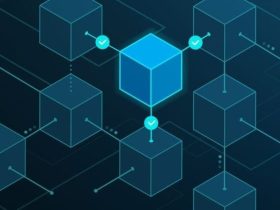Welcome to Cybersecurity Roundup, your daily op-ed style briefing on the most critical partnerships, funding developments, and emerging threats shaping the security landscape. In today’s edition—May 12, 2025—we explore five major stories:
-
The explosive growth and strategic opportunities in Generative AI for Cybersecurity
-
Team Shellphish’s deep-dive research and its implications for hardware security
-
Thailand’s Cyber Emergency Response Team (CERT) and its new public–private funding alliance
-
How AI is reshaping threat detection, according to MEED’s latest analysis
-
The hidden dangers of excessive data accumulation in the AI era, as argued by Nikkei Asia
Each section provides concise yet comprehensive coverage, followed by opinion-driven analysis on what these developments mean for CISOs, security vendors, and regulators. Let’s dive in.
Introduction: A Rapidly Evolving Cybersecurity Ecosystem
Today’s cybersecurity market is propelled by three powerful currents:
-
Partnerships & Alliances: Vendors, governments, and research teams are forging new collaborations to confront increasingly sophisticated adversaries.
-
Funding & Market Growth: Investment flows into AI-driven defenses and specialized research, fueling innovations but also raising implementation challenges.
-
Emerging Threats & Risks: From hardware exploits to the perils of mass data hoarding, novel attack vectors demand fresh strategies.
As organizations race to adopt zero-trust architectures and AI-enhanced defenses, they must also navigate regulatory scrutiny, talent shortages, and integration hurdles. The stories highlighted below capture these dynamics in action.
1. Generative AI in Cybersecurity: Market Opportunities & Implementation Hurdles
What happened:
A new Generative AI in Cybersecurity Research Report forecasts the global market to grow at a 32% CAGR through 2034, driven by remote-work vulnerabilities and rising data-breach costs. The report, published May 12, 2025, identifies key segments—automated threat-hunting, intelligent incident response, and AI-powered deception platforms—as primary growth levers. However, it also warns of high implementation challenges, including data privacy concerns, model explainability, and integration with legacy SIEM systems.
Source: GlobeNewswire
Analysis & Commentary:
Generative AI promises to revolutionize security operations centers (SOCs) by automating playbook generation and simulating attack scenarios. Yet, real-world deployments often falter due to “black-box” models that regulators and auditors cannot easily validate. Organizations must balance the promise of rapid detection with the risk of erroneous or biased outputs. Security vendors should invest in transparent model architectures and robust validation frameworks. Meanwhile, CISOs must champion cross-functional teams—bringing together data scientists, legal experts, and threat analysts—to ensure AI tools deliver measurable risk reduction without introducing new compliance liabilities.
2. Team Shellphish Mines Hardware for Vulnerabilities—A Wake-Up Call
What happened:
Open-source security research group Team Shellphish published an in-depth report on April 30, 2025, detailing multiple zero-day vulnerabilities in widely used IoT chipsets. Using a combination of fuzzing techniques and side-channel analysis, they uncovered flaws that could allow attackers to bypass secure boot and extract private keys. The group has coordinated with affected vendors, but full firmware updates won’t be available until Q3.
Source: The Santa Barbara Independent
Analysis & Commentary:
While software patches are now routine, hardware vulnerabilities reveal the systemic risk posed by black-box supply chains. IoT devices in critical infrastructure—smart meters, industrial controllers, medical devices—often run outdated firmware and lack over-the-air update mechanisms. Team Shellphish’s findings underscore the need for “hardware-as-code” paradigms where firmware designs are open, auditable, and continuously tested. Security-conscious organizations should demand supply-chain transparency, require attestation protocols, and budget for emergency firmware rollouts. The era of “set-and-forget” hardware is over—cyber resilience now starts at silicon.
3. Thailand CERT Launches Public–Private Cybersecurity Fund
What happened:
Thailand’s National Cyber Emergency Response Team (CERT) announced a landmark funding alliance with three domestic telcos and two fintech firms, creating a 500-million-baht (≈ USD 14 million) Cybersecurity Innovation Fund. The initiative aims to accelerate R&D in threat intelligence sharing, 5G-era network defenses, and SME-tailored security solutions. The fund will be administered by a joint public–private board, with seed grants awarded this summer.
Source: Nation Thailand
Analysis & Commentary:
This public–private model represents a proactive shift in national cyber policy, recognizing that government alone cannot outpace dynamic threat actors. By engaging industry partners—including telcos with deep network visibility and fintechs with real-time transaction data—Thailand CERT can foster integrated threat ecosystems. However, governance will be critical: transparency in grant selection, intellectual property arrangements, and data-sharing protocols will determine whether the fund spawns viable startups or gets mired in bureaucracy. Other ASEAN states will watch closely: this could become a blueprint for regional cyber alliances.
4. AI Reshapes Cybersecurity’s Playing Field
What happened:
A feature in MEED highlights how AI is transforming security—from predictive risk scoring to automated penetration testing. Case studies include Gulf-based banks using NLP models to sift through threat feeds and oil-and-gas operators deploying computer-vision systems to detect insider threats on camera footage. The analysis praises AI’s ability to prioritize alerts but cautions about over-reliance on models trained on synthetic data.
Source: MEED
Analysis & Commentary:
AI’s greatest contribution is its capacity to tackle scale: modern organizations generate petabytes of logs daily, overwhelming human analysts. However, the reliance on synthetically generated training sets can introduce blind spots where real adversaries exploit model weaknesses. Security teams must adopt rigorous data-governance practices—curating representative datasets, instrumenting feedback loops, and continuously retraining models on live incidents. Moreover, blending AI insights with traditional human expertise—an approach dubbed “centaur security”—remains the best defense against adaptive threats.
5. Excessive Data Accumulation: A New Cybersecurity Threat
What happened:
An opinion piece in Nikkei Asia argues that in the AI age, the rampant hoarding of personal and operational data has itself become a cybersecurity liability. Companies collect massive datasets to train increasingly accurate models, yet store them in centralized repositories that present lucrative targets for attackers. The author cites a recent breach where over 2 billion user records were exposed at a data broker, amplifying risks of identity theft and black-market trading.
Source: Nikkei Asia
Analysis & Commentary:
Data is the fuel of AI engines—but it’s also the Achilles’ heel of digital infrastructures. Every additional petabyte stored amplifies an organization’s attack surface, inviting sophisticated exfiltration techniques like ultrafast “data-in-motion” attacks. To mitigate this, security leaders should embrace “data minimization” principles: retain only the data necessary for model accuracy, apply homomorphic encryption for sensitive fields, and distribute datasets across secure enclaves. Regulatory frameworks such as GDPR and Brazil’s LGPD already mandate data-reduction strategies—security teams must operationalize these rules to turn compliance into resilience.
Conclusion: Navigating a Complex Cybersecurity Horizon
Today’s roundup underscores that cybersecurity is no longer a siloed discipline—it sits at the intersection of AI innovation, hardware integrity, public–private collaboration, and data governance. Key takeaways:
-
AI-Driven Defense brings unmatched scale but requires rigorous validation and human oversight.
-
Hardware Vulnerabilities demand new supply-chain transparency models and firmware agility.
-
Collaborative Funding initiatives—like Thailand’s CERT fund—can catalyze regional resilience.
-
Data Hoarding poses systemic risks; data minimization and distributed architectures are essential.
As adversaries evolve, so too must our strategies. Organizations that integrate AI responsibly, fortify hardware from the ground up, and champion transparent partnerships will be best positioned to thrive in 2025 and beyond.
















Got a Questions?
Find us on Socials or Contact us and we’ll get back to you as soon as possible.